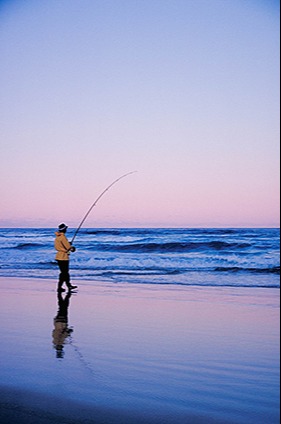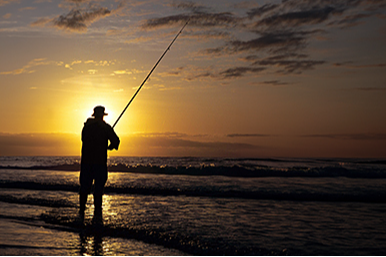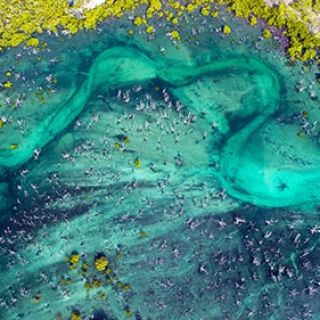What will be in the new zoning plan?
Key changes that will be included in the new zoning plan for the Great Sandy Marine Park include:
- change in zoning to represent 12.8% of the area of the marine park in green zones contributing to a total of 28.6% of the marine park in highly protected zones (green and yellow zones)
- removal of commercial large mesh gill nets and ring nets from the Conservation Park zones within Baffle Creek, Elliott River, Burrum River system, the Great Sandy Strait and Tin Can Inlet
- measures to increase protection of threatened species, including shorebirds, turtles, dugongs and grey nurse sharks
- measures to protect cultural and amenity values
- zone changes to facilitate local government responses to increased coastal erosion from climate change impacts.
Why is the zoning plan changing?
Globally, marine biodiversity is under threat from a range of factors including climate change, population growth, pollution and increasing use. The Great Sandy Marine Park is being impacted by these global trends.
The Great Sandy Marine Park:
- boasts 23 broad habitat types, however several of these are under-represented in the highly protected zones of the existing zoning plan, placing the marine park’s biodiversity and critical species at risk
- has seen a significant decrease in its extent of seagrass habitat
- is seeing a significant increase in mature marine turtle and dugong strandings resulting from a range of causes including boat strike, poor health and flooding
- includes the only known gestation site on the east coast of Australia for the critically endangered grey nurse shark, however the existing zoning plan does not effectively protect sharks at this key aggregation site from being hooked or accidentally caught by recreational and commercial line fishers
- is seeing a decrease in the numbers of many migratory shorebird species, some by more than 10% per year
- is subject to increasing coastal impacts from severe weather events caused by climate change
- is subject to a range of demands from competing uses.
Changes being made to the Great Sandy Marine Park zoning plan will help address threats to the long-term conservation of wildlife and their habitats and preserve and enhance the region’s lifestyle and economic strengths.
What are the opportunities and benefits?
The new zoning plan provides the opportunity to:
- better protect cultural values, respect and recognise First Nations peoples’ native title rights and responsibilities for caring for their sea Country
- improve biodiversity and provide better protection of several iconic and threatened species, which are significant nationally and internationally including whales, dolphins, dugongs, turtles, grey nurse sharks and shorebirds
- largely maintain the use of the marine park by the commercial trawl, crab, line and harvest fisheries, and those components of the net fishery that are of a lesser risk to threatened species
- enhance the region’s enviable nature-based and recreational fishing lifestyle
- support future economic growth in the region based on nature-based tourism, recreational and charter fishing and, where appropriate, aquaculture
- assist local councils to address coastal impacts of climate change.
How will it support nature-based recreation and tourism?
The new zoning plan provides an opportunity to secure the long-term sustainability of the region’s natural and cultural assets, and the tourism and recreational industries they support, for generations to come.
These natural and cultural assets also underpin the enviable nature-based lifestyle and recreational opportunities the region is renowned for.
This includes recreational and charter fishing, nature-based tourism experiences, boating, surfing, kayaking, stand-up paddle-boarding, snorkelling, scuba diving, bird watching, beach four-wheel driving, and walking.
The Great Sandy Marine Park covers an area of approximately 6,000 square kilometres and includes Hervey Bay, the Great Sandy Strait, Tin Can Inlet and Queensland coastal waters (seaward to three nautical miles).
The Great Sandy Marine Park surrounds the K’gari (Fraser Island) World Heritage Area and is an area of exceptionally high natural and cultural value, which includes:
- Great Sandy Strait—a Ramsar Wetland of International Significance
- species of international and national significance—marine turtles, dugongs, grey nurse sharks, humpback whales, Australian humpback dolphins and migratory shorebirds
- 11 declared Fish Habitat Areas protecting key fish habitats to support the state’s recreational and commercial fisheries
- culturally and spiritually significant sea Country for the Bailai (Byellee), Gurang, Gooreng Gooreng, Taribelang Bunda, Butchulla and Kabi Kabi First Nations peoples.











